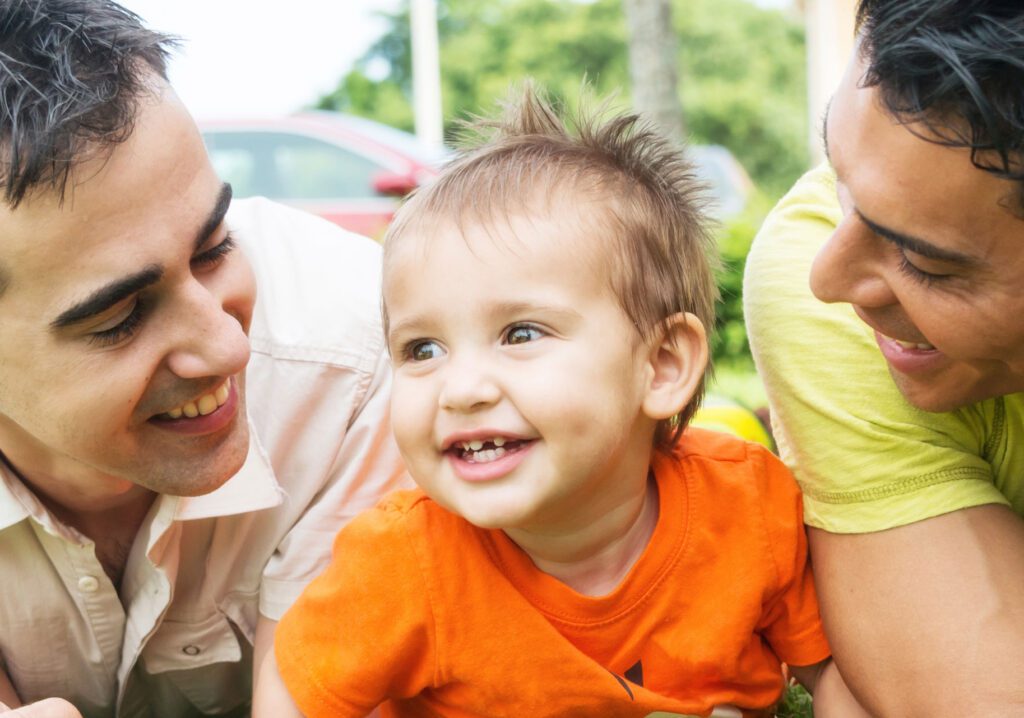Rainbow Parenting Journeys

DO YOU CONSIDER the lived experiences of LGBTQ+ families to be “adult” social issues? If so, think again! Family structures, experiences and needs have a big impact on early childhood development.
What can you do to support Rainbow families? Read on to learn more about these families so that you can recognize their assets, respond to their needs, and partner with them in meaningful and constructive ways.
What do I need to know about LGBTQ+ parents and caregivers?
- LGBTQ+ individuals build their families in many of the same ways that other people do. Some create blended families, while others build families through adoption, surrogacy, alternative insemination, and other means that are planned and intentional.
- LGBTQ+ parents are up to seven times more likely to adopt.
- Some LGBTQ+ parents enter early childhood programs with long personal histories of overcoming obstacles to parenting.
- Others become parents prior to coming out and may have children who were conceived in prior relationships.
- LGBTQ+ individuals are more likely to parent children with special needs through adoption.
What should I keep in mind when working with Rainbow families?
- There is no such thing as an “ideal” family. Each family has unique strengths, relationships, struggles, and supports.
- Approach each family with openness and curiosity. Be aware that some families will understandably be more sensitive to scrutiny and perceived judgment, and respect their needs and feelings.
- Understand that LGBTQ+ caregivers may not always have equal access to co-parenting and second-parent adoption rights due to different state laws, regulations and legal precedents. Consider how this lack of legal recognition and protection may affect children.
- Reflect on the different ways that Rainbow families are formed—and think about how this affects a family’s life experiences. For instance, some families may not have experienced pregnancy or childbirth. Others, formed through adoption, may or may not have relationships with birth parents.
- Look at each family through an asset-based lens. For example, consider the unique features and strengths of families with two moms or two dads rather than thinking that they are “missing” one type of parent.
- Remember that it may take some time to build trust so that LGBTQ+ families can feel safe, seen and supported in your early childhood community.